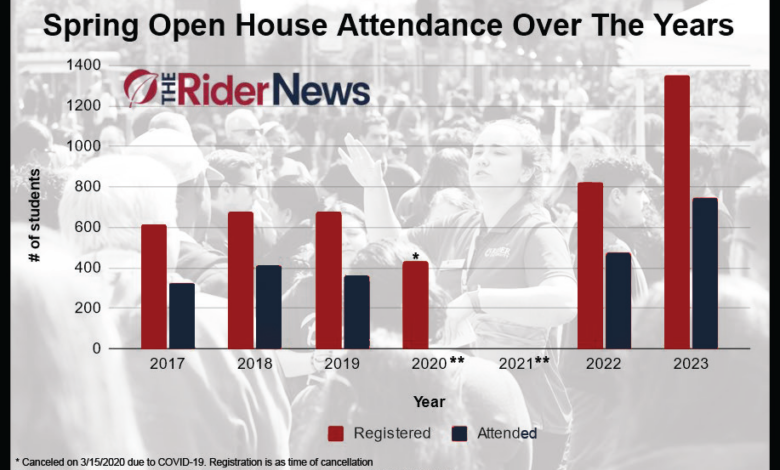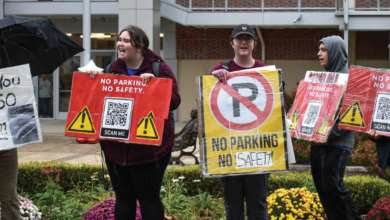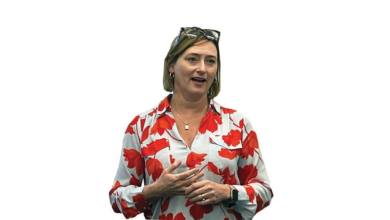
Open House brings hope to Rider
By Kaitlyn McCormick
AN influx of traffic flowed down Lawrenceville Road bringing a record number of prospective Broncs to Rider’s campus and causing backups past I-295 on Route 206 and at both I-295 exits leading toward Rider for what Vice President of Enrollment Management Drew Aromando deemed a beautiful day on campus.
Aside from saying this being the time traffic was severely backed up coming off of the interstate highway system, Aromando reported that the university’s April 23 Open House saw 746 potential students and over 2,000 total attendees, a university record, breaking the previous best of 583 in 2015.
The Open House preceded a “critical week” for the university, tracking admissions and deposits leading up to the May 1st, National Decision Day.
Aromando reported that, as of April 24, the university saw 534 freshmen deposits and 117 transfer deposits, exceeding 2022 by 69 deposits to date – a 12% total increase.
“This is a great place to be, and the signs have been really good,” Aromando said.
The reports of trending enrollment numbers and record-breaking interest come less than a month after Moody’s Investors Service downgraded Rider’s bond rating on April 5, the third time since 2020.
James Hartman, Rider’s senior vice president for finance and chief financial officer, illustrated the connection that enrollment has with the university’s finances, noting that about 93% of Rider’s revenue comes from student expenses like tuition, fees and housing; “That is the lifeblood of Rider … enrollment, students,” he said.
The university has been the center of press and debate surrounding financial circumstance, which Moody’s reports culminates in $111 million of outstanding debt, and criticism following the archival and elimination of a number of small programs. However, Hartman and Aromando made sure to continue enforcing the impact the COVID-19 pandemic had on class sizes and enrollment and, subsequently, finances.
“If you have a down year in enrollment … you live with that lower class for four years until they graduate,” Hartman said, explaining that financial implications from one low-enrolled or low-residency year can impact the university for a longer period of time.
Despite these issues, Aromando is remaining positive in Rider’s sense of “rebranding.”
One facet of this phase is “notching up” the quality of admits, which Aromando said is to ensure that the university is enrolling students who will be successful academically and financially. For example, the school is not admitting students with a 2.5 GPA or below.
“Additionally, in some of the majors students have tended to struggle, mostly the sciences, we’ve enhanced the transcript review to make sure we’ve got four years of math or four years of science,” Aromando said. “It makes the classroom better … and it also improves things like retention rates.”
He also reflected on the $500 balance deregistration threshold put in place last semester.
“We want to recruit to retain, and we want to set students up for academic success and financial success. We don’t do any favors to anybody by starting them out, letting the balance snowball, and then they end up having to transfer out with a balance,” Aromando said.
To prepare for May 1, the university has scheduled a slew of decision week events. The sudden uptick in interest is one that Aromando and Hartman described as not from any one specific reason, rather an across the board effort in getting the Rider name out and utilizing marketing and admission strategies.
“There really seems to be a buzz about Rider right now,” Hartman said. “It’s a pretty neat place to be.”


